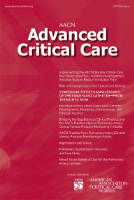
AACN Advanced Critical Care
Scope & Guideline
Empowering healthcare professionals through innovative research.
Introduction
Aims and Scopes
- Critical Care Nursing Practices:
The journal extensively covers best practices in critical care nursing, including patient assessment, management strategies, and innovative care models. - Ethics and Decision-Making in Healthcare:
A significant focus on ethical considerations and decision-making processes in critical care, particularly regarding patient autonomy, informed consent, and surrogate decision-making. - Interdisciplinary Collaboration:
The importance of teamwork and communication among healthcare professionals in critical care settings is a core area, highlighting strategies that enhance interdisciplinary collaboration. - Innovations in Technology and Care Delivery:
The journal explores advancements in technology such as telehealth, point-of-care ultrasonography, and the use of artificial intelligence in nursing practice. - Palliative and End-of-Life Care:
A consistent focus on integrating palliative care principles into critical care nursing, addressing the needs of patients with serious illnesses and their families. - Nurse Education and Professional Development:
The journal emphasizes the continuous education and professional development of nurses, including competency assessments and leadership training.
Trending and Emerging
- Telehealth and Virtual Care:
The rise of telehealth and virtual nursing solutions has become a prominent theme, particularly in the context of the COVID-19 pandemic, highlighting the need for innovative care delivery methods. - Mental Health and Well-Being of Nurses:
There is an increasing emphasis on the mental health and well-being of nurses, addressing burnout, moral injury, and the psychological impact of critical care work. - Palliative Care Integration:
The integration of palliative care principles into critical care settings is gaining attention, emphasizing the importance of holistic approaches to patient management. - Artificial Intelligence and Technology in Nursing:
The exploration of AI and technology in nursing practice is a growing area, with discussions around its application in electronic health records and predictive analytics. - Health Disparities and Equity:
Recent publications are increasingly addressing health disparities and the need for equitable care in critical settings, focusing on social determinants of health.
Declining or Waning
- Traditional Case Studies:
While case reports remain relevant, there has been a noticeable decrease in the publication of traditional case studies, as the journal shifts towards broader research themes and innovative practices. - Basic Nursing Skills and Protocols:
There appears to be a declining emphasis on basic nursing skills or protocols, as the journal increasingly focuses on advanced practice and complex care scenarios. - Single-Disease Focus:
Research centered on single diseases or isolated conditions has become less frequent, indicating a shift towards more integrated and holistic approaches to patient care. - Historical Perspectives in Nursing Practice:
Papers focusing on historical perspectives or retrospective analyses in nursing are less common, suggesting a move towards contemporary issues and forward-looking practices.
Similar Journals
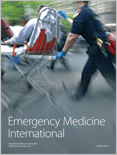
Emergency Medicine International
Advancing emergency care through cutting-edge research.Emergency Medicine International is a distinguished journal dedicated to the dynamic field of emergency medicine, published by HINDAWI LTD. As an Open Access journal since 2010, it ensures widespread dissemination of high-quality research, providing vital insights and advancements in emergency care and crisis intervention methodologies. With an ISSN of 2090-2840 and an E-ISSN of 2090-2859, the journal is indexed in Scopus, where it holds a commendable rank of #104 of 109 in the emergency medicine category, placing it in the 5th percentile. Spanning crucial years from 2014 to 2017 and 2022 to 2024, Emergency Medicine International has established a reputation for publishing significant findings that aid practitioners and researchers in improving emergency healthcare outcomes. Operating from its headquarters in Egypt, the journal serves as an essential resource for professionals and students alike, fostering the development of evidence-based practice in a critical area of healthcare.

Revista de Pesquisa-Cuidado e Fundamental Online
Fostering accessible knowledge for better patient outcomes.Revista de Pesquisa-Cuidado e Fundamental Online, published by the Universidade Federal do Estado do Rio de Janeiro, is a prominent journal dedicated to advancing knowledge and practice in the field of nursing and healthcare. With its Open Access model since 2009, this journal provides an invaluable platform for researchers, professionals, and students to share innovative findings and insights that address critical issues in patient care and nursing education. Though its specific impact factor is not listed, the journal's commitment to open access fosters greater visibility and accessibility of research, ensuring that vital information reaches a wide audience. The journal aims to enhance the quality of care and to support the ongoing development of nursing as a scientific discipline. Located in Rio de Janeiro, Brazil, the journal also reflects regional health paradigms while contributing to global discourse in healthcare research.
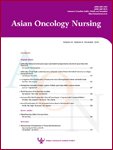
Asian Oncology Nursing
Innovating Cancer Care Through Collaborative ResearchAsian Oncology Nursing is a pivotal journal dedicated to advancing the field of oncology nursing across the Asian continent and beyond. Published by the esteemed Korean Oncology Nursing Society, this journal serves as a platform for researchers, clinicians, and educators to disseminate groundbreaking findings and innovative practices in cancer care and nursing. With an ISSN of 2287-2434 and E-ISSN 2093-7776, it is committed to enhancing the knowledge and skills of oncology nursing professionals, thereby improving patient outcomes. Although currently not operating as an open-access platform, the journal emphasizes the significance of bridging the research gap in oncology nursing, fostering collaboration among professionals in the field. Given the increasing importance of culturally competent care in oncology, Asian Oncology Nursing positions itself as an essential resource for those who strive to elevate standards of care and educate future generations of oncology nurses.

Nursing Open
Championing evidence-based practice in nursing.Nursing Open is a premier open access journal published by WILEY, dedicated to advancing the field of nursing and healthcare research. With its ISSN 2054-1058, this journal has been at the forefront of disseminating innovative and impactful research since its inception in 2014. As an open access platform, it ensures that knowledge is accessible to all, promoting collaboration and engagement among researchers, practitioners, and students. Hailing from the United States and located at 111 River St, Hoboken, NJ 07030, Nursing Open has established itself as a vital resource in the nursing discipline, reflected in its impressive Q1 ranking in the 2023 category of Nursing (miscellaneous) and Scopus ranking of #36 out of 139 in General Nursing, placing it in the 74th percentile. With a commitment to high-quality research and a focus on contemporary issues in nursing, this journal invites contributions that foster evidence-based practice and enrich the global nursing community.

Recherche en Soins Infirmiers
Exploring the forefront of nursing research and practice.Recherche en Soins Infirmiers, published by the ASSOC RECHERCHE & SOINS INFIRMIERS in France, offers a vital platform for sharing innovative research and insights in the field of nursing care. With its ISSN 0297-2964 and E-ISSN 2271-8362, this journal serves as an essential resource for healthcare professionals, researchers, and students alike, striving to advance nursing practices and improve patient care. Although it currently holds a Q4 ranking in the 'Medicine (Miscellaneous)' category and occupies a position of rank #468 out of 636 in the Scopus General Medicine category, it is dedicated to fostering scholarly communication and collaboration. The journal's scope reflects a comprehensive approach to nursing theories, practices, and innovations from the years 1996 to 2022, with ongoing publications anticipated for 2024. Despite the absence of an open access model, the journal continues to publish works that address pressing healthcare challenges, thereby contributing significantly to the advancement of nursing as a discipline.
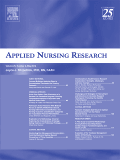
APPLIED NURSING RESEARCH
Elevating Nursing Practice Through Research ExcellenceApplied Nursing Research is a premier journal dedicated to the dissemination of high-quality research within the nursing field, published by W B Saunders Co-Elsevier Inc. With an impact factor that places it in the Q1 category for Nursing (miscellaneous), this journal ranks 23rd out of 139 in its Scopus category, firmly establishing itself in the top percentile (83rd). Since its inception in 1988, Applied Nursing Research has provided a vital platform for sharing innovative findings that impact clinical practice and healthcare delivery. The journal serves as an essential resource for researchers, professionals, and students aiming to enhance their knowledge and application of nursing practices. While it does not offer open access, it remains a crucial publication for those seeking to explore contemporary nursing topics and research trends through a rigorous academic lens.
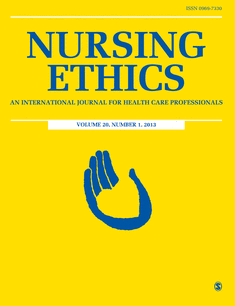
NURSING ETHICS
Pioneering Research in Nursing EthicsNURSING ETHICS, published by SAGE PUBLICATIONS LTD, is a premier international journal dedicated to the exploration and examination of ethical issues within the field of nursing. Since its inception in 1994, the journal has consistently provided a critical platform for scholars and practitioners to discuss ethical dilemmas and address complex legal aspects affecting nursing practice. With a remarkable Q1 ranking in the categories of Issues, Ethics, and Legal Aspects, it ranks in the top percentile, boasting a 92nd percentile position among its peers. Although currently not an Open Access journal, NURSING ETHICS plays a crucial role in fostering dialogue and advancing knowledge in the rapidly evolving landscape of nursing ethics, making it an invaluable resource for researchers, professionals, and students alike. The journal's commitment to high-quality research ensures that vital ethical considerations remain at the forefront of nursing education and practice, reinforcing its significance in a field that is continually impacted by ethical challenges.

Investigacion y Educacion en Enfermeria
Connecting researchers and practitioners for better healthcare.Investigacion y Educacion en Enfermeria, published by Universidad de Antioquia, Facultad de Enfermería, stands as a pivotal open-access journal since 1983, contributing significantly to the field of nursing and healthcare education within Colombia and beyond. With its ISSN 0120-5307 and E-ISSN 2216-0280, this journal aims to foster the dissemination of high-quality research, aiming to enhance nursing practices and education aligned with a wide array of domains including Community and Home Care, Family Practice, Geriatrics, and Maternity and Midwifery. The journal's impressive performance in the 2023 Scopus rankings places it in the top quartiles in several categories, reflecting its importance and influence, particularly in Nursing and Health Sciences. By encouraging collaboration and dialogue among researchers, practitioners, and students, Investigacion y Educacion en Enfermeria aspires to serve as an essential resource for advancements in nursing education and service delivery, making vital contributions to the evolving landscape of healthcare.
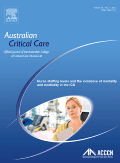
Australian Critical Care
Advancing critical care through innovative research.Australian Critical Care is a preeminent journal published by Elsevier Science Inc, dedicated to advancing the field of critical and emergency nursing. With an impressive impact factor reflective of its significant contribution to the discipline, this journal holds a prestigious position within the academic community, currently ranking #3/32 in Emergency Nursing and #3/27 in Critical Care Nursing, placing it within the top percentiles of its category. Furthermore, it is noted for its rigorous scholarship, evident in its Q1 ranking for both critical care and emergency nursing categories in 2023. Since its inception in 1992, Australian Critical Care has been a vital forum for researchers and practitioners, publishing cutting-edge research, reviews, and clinical studies that foster innovation and improve patient outcomes in critical care settings. Although it does not currently offer open access options, its extensive reach and well-curated content continue to attract a dedicated readership, promoting knowledge dissemination in this essential field.
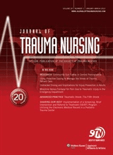
Journal of Trauma Nursing
Shaping the Future of Emergency Nursing Through KnowledgeJournal of Trauma Nursing, published by LIPPINCOTT WILLIAMS & WILKINS, is a pivotal resource in the fields of trauma, critical care, and emergency nursing. With an ISSN of 1078-7496 and an E-ISSN of 1932-3883, this journal has been at the forefront of disseminating cutting-edge research and innovative practices since its inception in 1995, continuing through 2024. Positioned within the Q3 quartile of the Advanced and Specialized Nursing, Critical Care Nursing, and Emergency Nursing categories, it provides valuable insights into trauma care that enhance clinical practice and patient outcomes. The journal is recognized for its commitment to advancing knowledge and improving the quality of nursing care, making it an essential publication for researchers, practitioners, and students who are dedicated to the fields of trauma and emergency nursing. While currently not available as Open Access, it remains a reputable source of peer-reviewed content aimed at fostering a comprehensive understanding of trauma nursing. Located in the United States at TWO COMMERCE SQ, 2001 MARKET ST, PHILADELPHIA, PA 19103, the Journal of Trauma Nursing continues to impact the profession significantly.